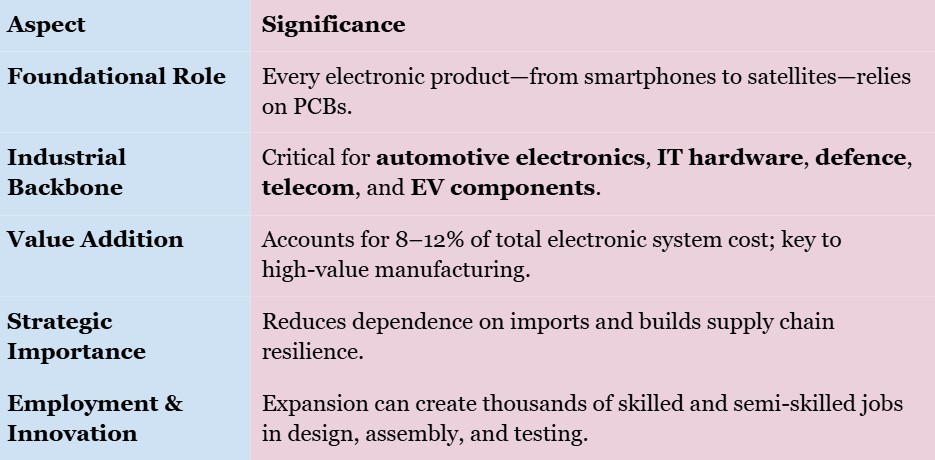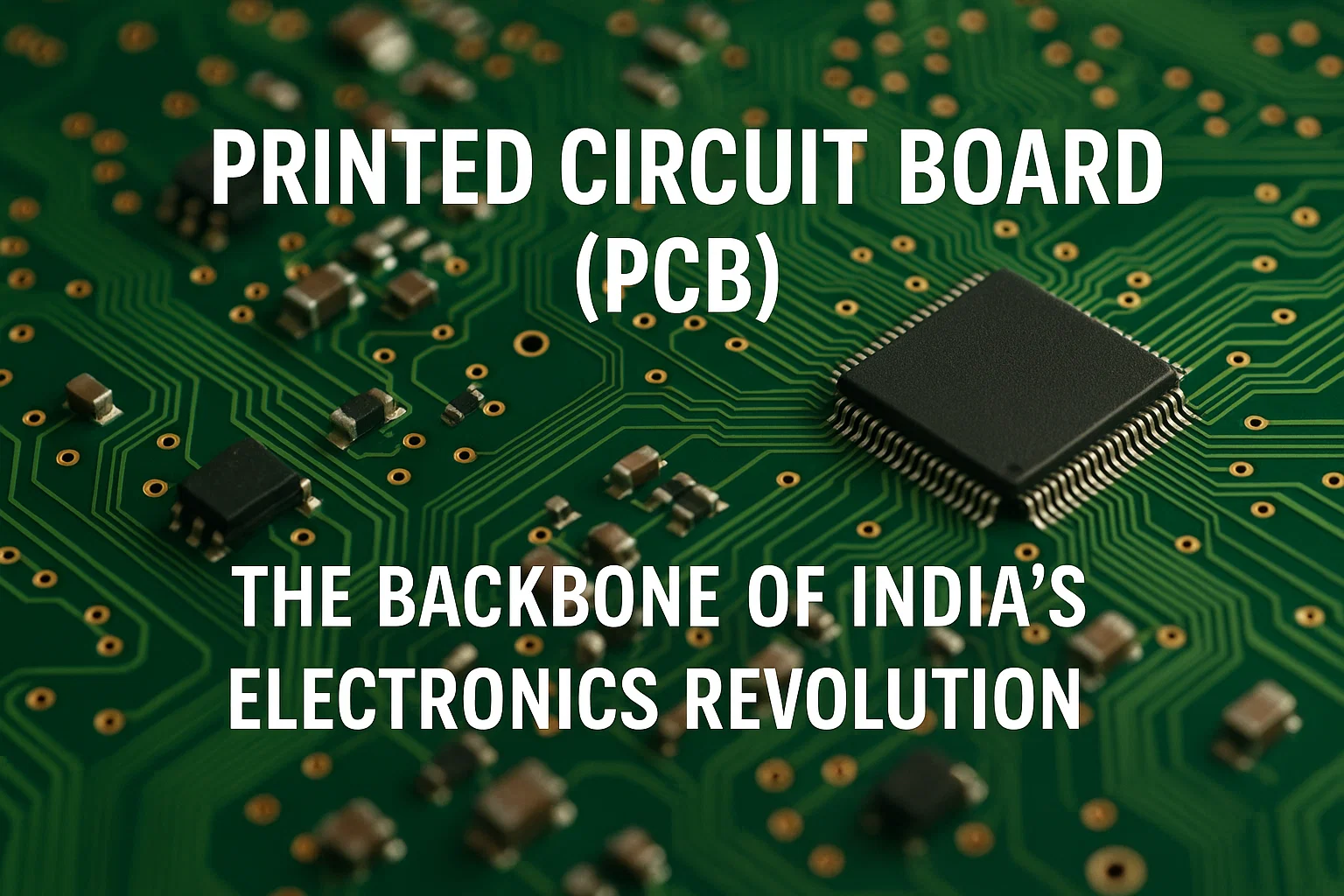Printed Circuit Board (PCB): The Backbone of India’s Electronics Revolution
Learn about the importance of Printed Circuit Boards (PCBs) in India’s electronics ecosystem. Explore their role, market growth, government policies, job creation, and India’s roadmap to becoming a $14 billion PCB manufacturing hub by 2030.
Printed Circuit Board (PCB):
A joint report by the Electronic Industries Association of India (ELCINA) and Feedback Advisory projects that India’s domestic Printed Circuit Board (PCB) manufacturing output will reach $14 billion by 2029–30, forming around 10% of India’s $150 billion electronics component manufacturing target. This signals the growing importance of PCB manufacturing in India’s quest for electronic self-reliance.
What is a Printed Circuit Board?
A Printed Circuit Board (PCB) is the foundation of modern electronics, serving as both the mechanical structure and electrical pathway for connecting electronic components. It consists of copper conductive tracks etched onto a non-conductive substrate like fiberglass or epoxy resin, allowing current to flow efficiently between resistors, capacitors, and integrated circuits.
From smartphones and computers to satellites and electric vehicles, every digital system operates through a PCB, making it indispensable to today’s technology-driven world.
Significance of Printed Circuit Boards

Thus, PCBs are not just components—they are strategic enablers of India’s electronic manufacturing ecosystem.
What has Influenced the Growth of PCB Development in India?
1. Government Policy Support
The Government of India has implemented several policies to promote electronics manufacturing:
-
Electronics Component Manufacturing Scheme (ECMS) – Incentivises domestic component production.
-
Production Linked Incentive (PLI) Scheme – Offers financial incentives to firms expanding local manufacturing.
-
Scheme for Promotion of Manufacturing of Electronic Components and Semiconductors (SPECS) – Encourages investment in essential electronic components, including PCBs.
These policies have fostered a robust ecosystem, attracting both domestic and global investors.
2. New Manufacturing Projects
Indian and multinational companies are actively investing in advanced PCB facilities.
Notable projects include:
-
Kaynes Group, Syrma SGS, Ascent Circuits, and SRF Ltd., which are setting up multi-layer and HDI PCB plants in Tamil Nadu, Andhra Pradesh, and Madhya Pradesh.
These high-density interconnect (HDI) and multi-layer boards cater to sectors like EVs, defence, aerospace, and telecom.
3. Rapid Market Expansion
India’s PCB market is estimated at $4.2 billion (FY2025) and is projected to grow to $24.7 billion by 2033, driven by rising demand in automotive electronics, electric vehicles, telecom infrastructure, and consumer electronics.
This rapid growth is expected to transform India into a global hub for PCB production and reduce reliance on imports.
4. Employment & Value Addition
The establishment of 10–12 large-scale PCB plants could generate nearly 1 lakh jobs, directly and indirectly, while promoting indigenous production of raw materials such as copper-clad laminates.
This would significantly enhance domestic value addition, aligning with the Make in India and Atmanirbhar Bharat missions.
5. Global Opportunities
Currently, China and Thailand dominate global PCB manufacturing. However, India now has a strategic opportunity to position itself as a reliable alternative manufacturing hub by focusing on automation, R&D, and supply chain localization.
Global firms seeking diversification are increasingly viewing India as a preferred destination for PCB design, fabrication, and assembly services.
Conclusion
The Printed Circuit Board lies at the heart of India’s electronics ecosystem, symbolizing the shift from assembly-based production to full-scale component manufacturing. With strong policy support, rising demand, and increasing technological capability, India is poised to emerge as a global leader in PCB manufacturing by the end of this decade.
Subscribe to our Youtube Channel for more Valuable Content – TheStudyias
Download the App to Subscribe to our Courses – Thestudyias
The Source’s Authority and Ownership of the Article is Claimed By THE STUDY IAS BY MANIKANT SINGH




